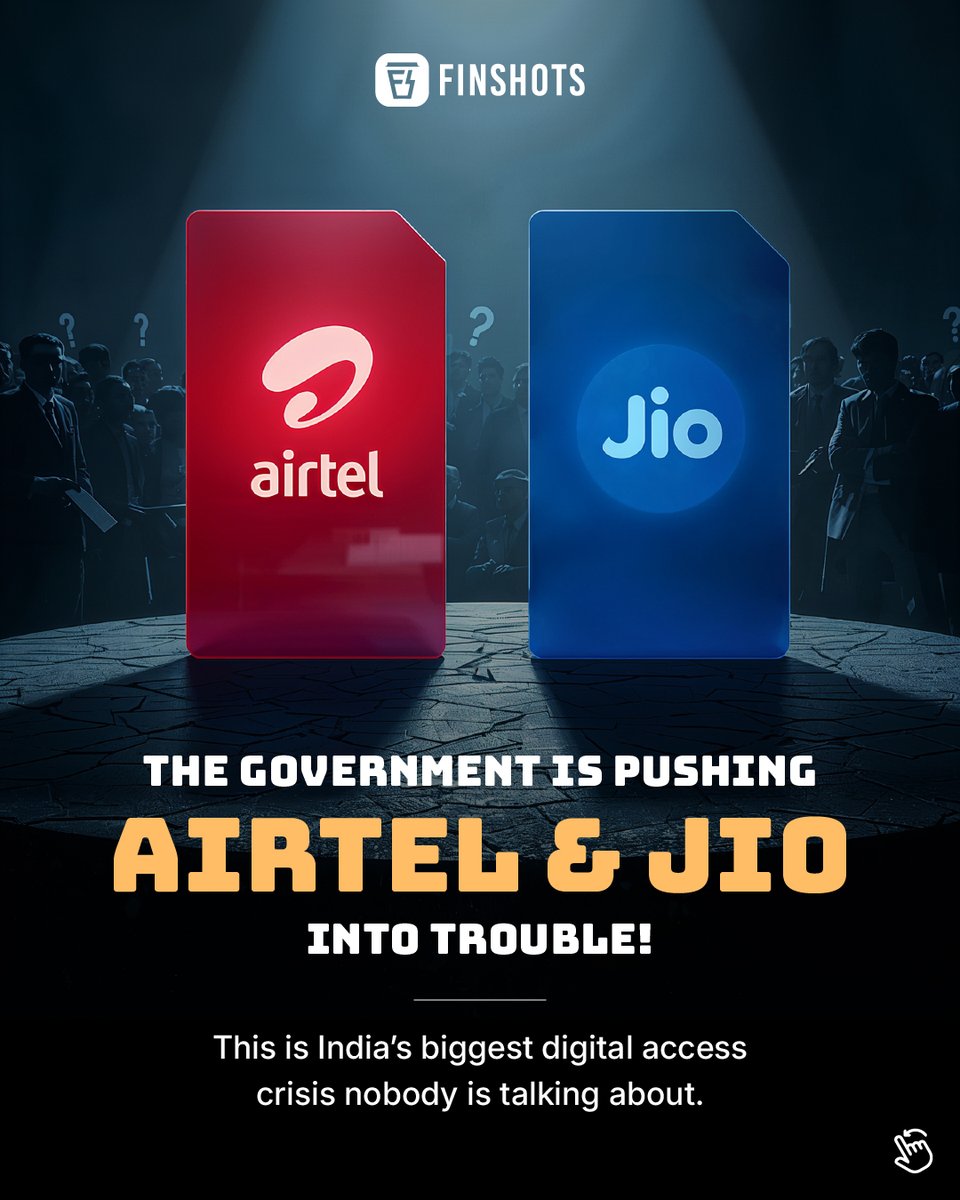Word on the street is that Jio is launching an affordable smartphone priced at Rs. 4000. And this could be a serious blow to Airtel and Vodafone-Idea (Vi).
Why? (1/6)
Why? (1/6)
Well, the answer lies in the massive 2G user base in India. Airtel has 13Cr and Vi has over 17Cr 2G users. 47% of Airtel's and 60% of Vi's users are on 2G
Even when Jio launched free calls and cheap data plans, they couldn't get a lot of 2G subscribers to shift to Jio (2/6)
Even when Jio launched free calls and cheap data plans, they couldn't get a lot of 2G subscribers to shift to Jio (2/6)
The reason being, Jio's 4G sim only works on a 4G phone. And most 4G smartphones sold at the time were still expensive for low-income groups. Although Jio released a 4G feature phone, it didn't manage to convince a lot of people to switch. However that might be changing now (3/6)
Jio is partnering with Google to launch affordable smartphones priced at ₹4000. And word on the street is that Jio has asked Indian suppliers to augment their production capacity so that Jio could push out 20 Cr smartphones in the next 2 years (4/6)
If Jio were to be successful in making an affordable 4G smartphone, it can be a serious blow to Airtel and Vi. On the flip side, Indian manufacturers like Dixon, Lava, Karbonn would receive a big fillip since they could put some of their manufacturing capacity to good use. (5/6)
For more insights like this, subscribe to Finshots-
bit.ly/35UXtkm It's free. (6/6)
bit.ly/35UXtkm It's free. (6/6)
• • •
Missing some Tweet in this thread? You can try to
force a refresh










